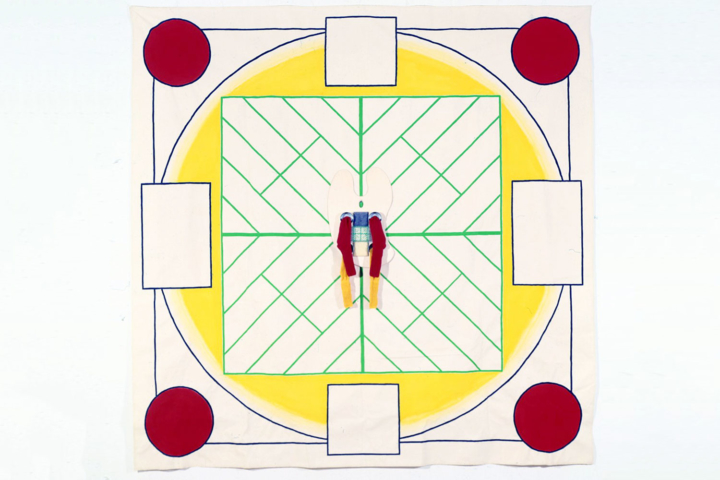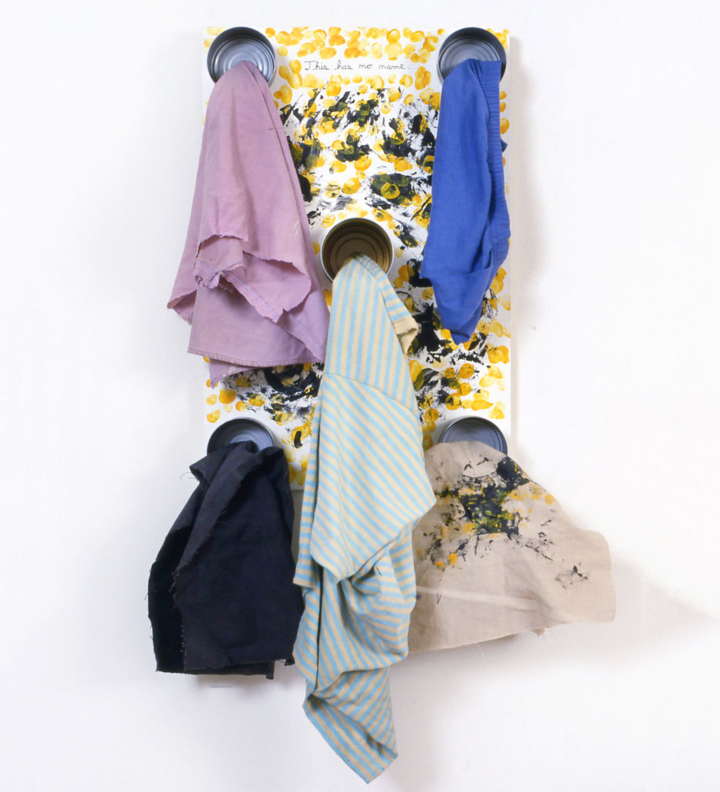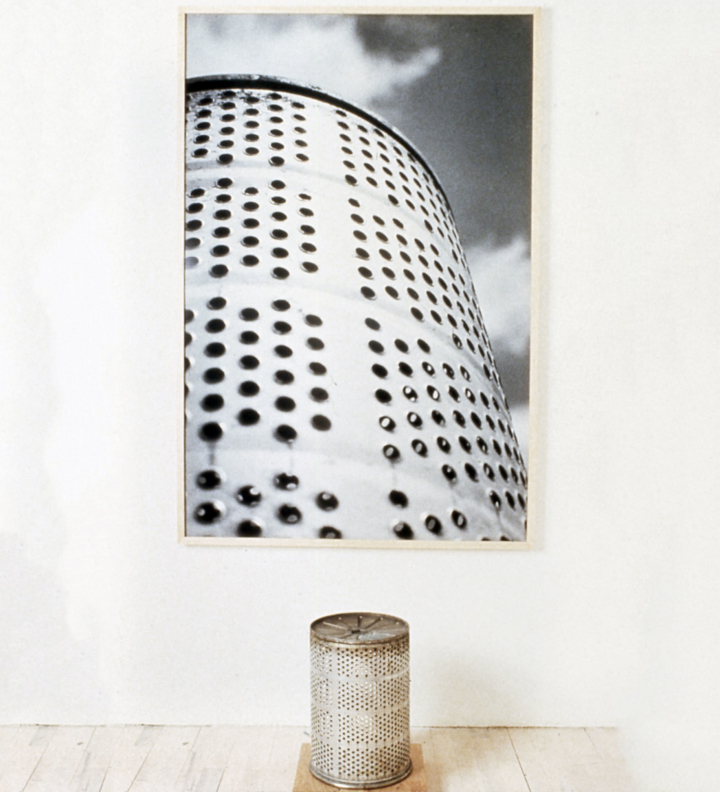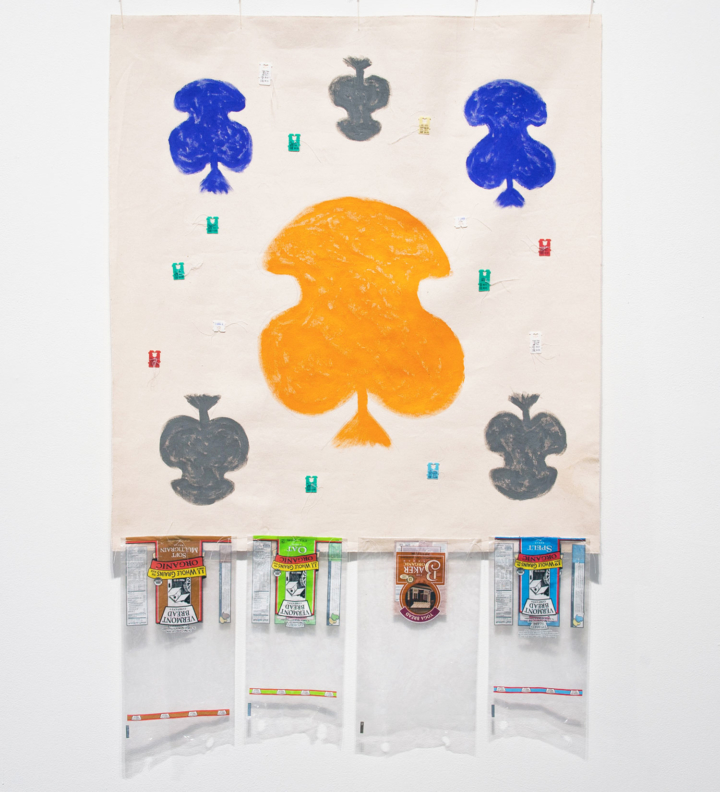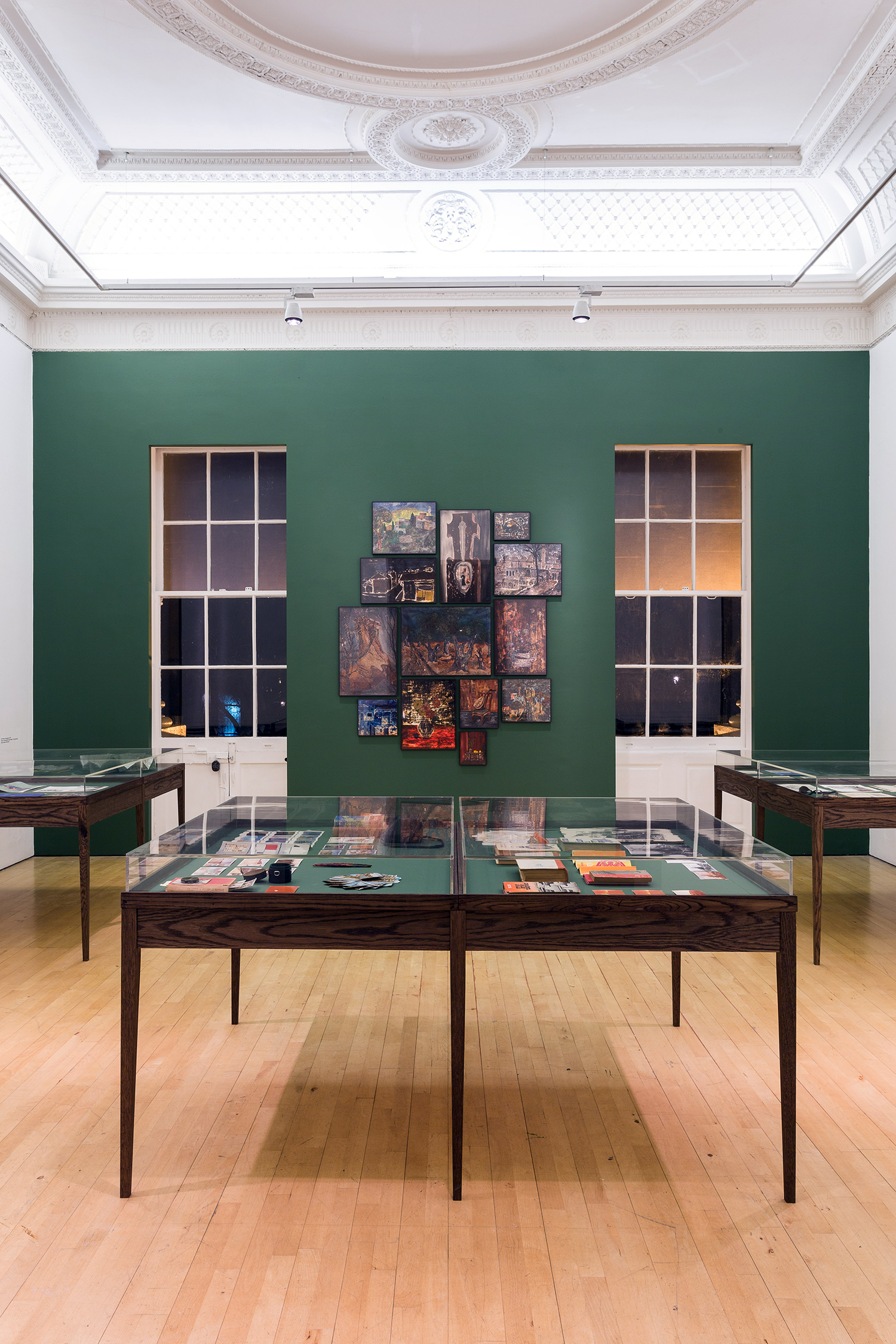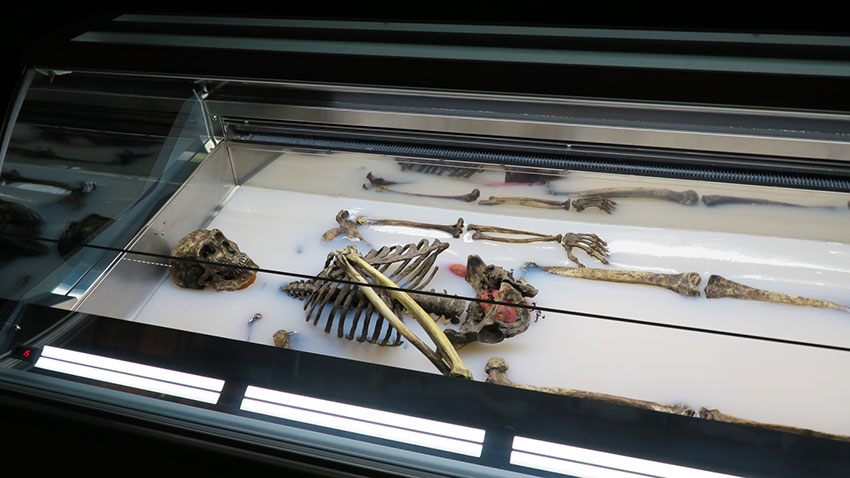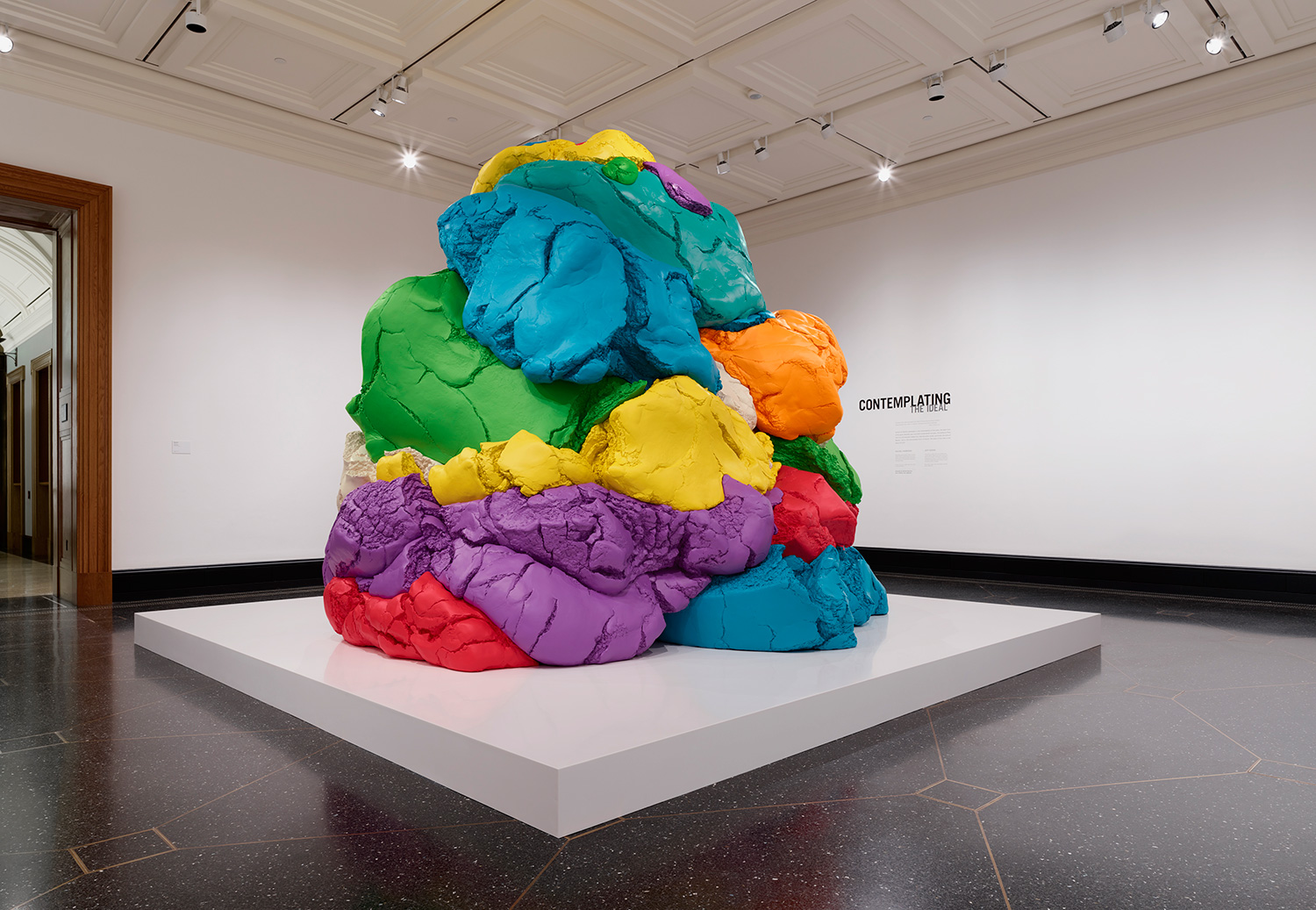For the past twenty-five years, B. Wurtz has been applying acrylic paint to the bottoms of aluminum pans in order to create geometric abstractions. Occasionally, he emphasizes words imprinted on the pans’ undersides, for example DURABLE or SUPPORT THE BOTTOM OF THE PAN. Ironically, much of his work is flimsy, barely held together. This longstanding project — arranged in a salon-style installation — is the first body of work that visitors to the still-new ICA in Los Angeles come across in “This Has No Name,” Wurtz’s first major survey in the United States.
It serves as a symbolic welcome sign for the rest of the exhibition. The tasteful use of conventional art materials in combination and in contrast with more everyday objects and ideas is commonplace for the New York-based artist, and the curators do their best to span the spectrum, both in terms of execution and evolution.
Don’t look at art. Look at the world (1990) is a large, unstretched piece of raw canvas with the black outline of a circle painted in acrylic. Inside the circle, the painted phrases “Don’t look at art” and “Look at the world” sandwich a wooden palette vomiting colored fabric. This is a succinct summation of the artist’s self-reflexive impulses: Wurtz’s art is about the world, or at least his world; he obviously believes this way of working is superior to the parochial preferences of so many other artists. Is the painting puking on the homogeneity of art or on its own overtly idealistic sentiment?

Two of the most humble and humbling works in the jam-packed show are also two of the most powerful. I didn’t make this (1980) consists of a small, rectangular piece of Styrofoam adhered to a piece of cardboard, with the title phrase written out in ink beneath. Untitled (Know Thyself) (1992) is another piece of raw canvas with black ink on it, this one smaller and even more concise: the subtitled phrase is equally affirmative and elusive and is marooned by maroon-dyed socks. As the art world increasingly exposes itself as a giant pyramid scheme, Wurtz’s delicately aggregated mementos of edifying personal(ized) debris prove to be uniquely vital.

